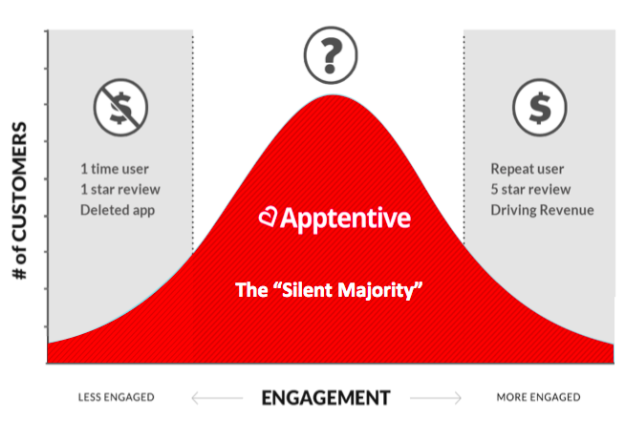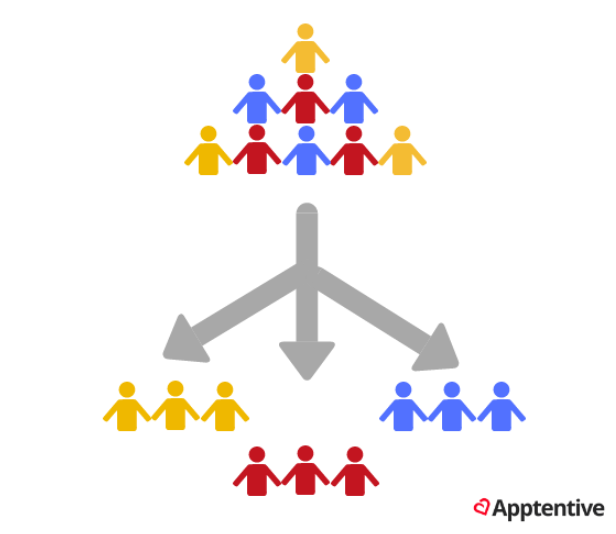Brands leading the way across all industries have one thing in common: they put their customers at the center of their business. Through a customer-centric approach, companies can prioritize their product roadmap based on direct customer feedback and sentiment rather than simulating real-life experiences, or worse, guessing how their customers feel. The level of care shown through customer centricity allows internal teams to think clearly, prioritize data over intuition, and rally behind one single point: the customer.
Although customer-centric strategies take time to develop, they’re worth their weight in gold when implemented correctly. When you prioritize customers, your experience will reflect the changes, which drives engagement, loyalty, and revenue. But with so many ways to integrate customer centricity into your strategy, where should you begin?
First, you have to have a baseline to understand how customer centric your business already is. Below is a checklist to assess how customer centric your company’s current approach is. Work through each step to gauge your starting point, and we’ll throw in tips to help you improve along the way.
1. Proactive listening
Fostering customer centricity starts with proactive listening. To get a sense of how customers feel about your brand, you must start by measuring what percentage of customers you hear from. The more customers you receive feedback from, the more cohesive and customer-centric your product can become.
Mobile app customers are hard-pressed to leave feedback in any form, and the wall between customers, publishers, and the app stores makes it all-too-easy to forget that there are real people on both ends of the app. Most brands today may think they build products around their customers, but in reality, they only hear from less than 1% of their customer base, which we call the “vocal minority.” That means about 99% of their customers are in the “silent majority” and not being put at the center of their product roadmap.

The average app’s customer engagement resembles a bell curve, with a great unknown covering the first two or even three standard deviations, representing the silent majority of customers from whom you have yet to receive feedback. And while your lovers and haters are certainly two groups worth your attention, the danger lies in forgetting that these two groups are not representative of your average customer. For example, by catering to your 5-star reviewers, you can increase profits from your most loyal 1%; by catering to your 1-star reviewers, you can increase retention within your most critical 1%. Yet, catering to neither group will create a better experience for the 98% of customers that lie somewhere between these two extremes.
2. Collected in context
The context in which messages are delivered to customers, or rather, finding the right “mobile moment,” is everything. The way we use mobile apps, and even the way we keep our devices on our person during most of our waking hours, have opened the door for deep personalization opportunities. But what happens when a mobile experience is handled incorrectly by a brand and comes off as disruptive rather than helpful? That is what we call the wrong mobile moment.
Finding the right mobile moment looks different for every brand as the placement, timing, and customer segment the in-app message is intended for will vary due to endless variables. To start, think about the in-app message you’re sending to figure out timing and placement. If the message is proactive, it should occur after customers take a high-value action within your app (like completing a purchase or a level) rather than in the middle of an action. If you’re asking customers to leave feedback through a survey, it should occur at a non-disruptive moment rather than interrupting the action the customer came to take.
3. Measured over time
It’s no longer good enough to simply measure once in awhile. You must keep a close eye on the pulse of your customer sentiment and continuously gauge how customers feel about their experience with your brand over time.
Having access to historical data not only gives you the opportunity to better understand each customer as an individual, it allows you to watch for trends in behavior and sentiment over time. The deeper your history with a customer, the easier it will be to predict their actions and, most importantly, deliver an engaging, personalized mobile experience.
4. Mapped to customer profiles
When you think about your customers, do you envision them as one group, or as small, unique segments? We’ve found that the most customer-centric businesses align with the latter. Centering your product strategy around your customers means understanding how their individual traits, actions, and feedback align with the rest of your customer base, and that means evaluating them as individuals. Providing the most personalized, customer-centric experience possible starts with building robust customer profiles, which all beings with segmenting.
Breaking your customers into segments will help you understand loyalty behavior, sentiment, and more in order to nurture similar actions across larger groups of your customers. The deeper you’re able to segment your customers by their in-app actions and feedback, the closer you can get to understanding which actions trigger loyalty status in order to identify future loyal customers.

5. Data and feedback turned into insights
Collecting large amounts of customer data is great, but it means nothing unless you can understand the “why” behind it. To better anticipate customer needs, you need to go a step further into what you know about them based on actions and feedback and leverage it to steer your product roadmap. To do so, you must circle back to step one and focus on listening to and implementing your customers’ feedback based on the insights it offers.
Feedback (both open-ended and structured) provided by customers is a treasure trove of insight that can help surface customer experience issues and successes, and can even shed light on competitor moves through the voice of the customer. When you connect the dots between customer feedback and action, you have the tools to prioritize higher ROI investments on your roadmap and measure the impact of your customer experience innovation in real-time.
Shameless plug: Alchemer Mobile (formerly Apptentive) can identify trends based on what customers say in reviews, survey responses, and messages. You can listen and react to customer feedback at scale, without finding a data scientist to set up the data cubes, pull in the sources, and prepare the right views for leaders to consume. Our analytics capabilities work from day one using semantic analysis to figure out what is being said and make sense of it for you, so you aren’t guessing at what topics or keywords to look at.
6. Insights delivered to more of your company
When companies make progress in putting the customer at the center of their operations, it may go unnoticed by the majority of the team. Unless you work in product management, understanding the importance of customer centricity (or even thinking about ways to measure it!) may be lost unless they’re explained to you. It’s up to the product owners to champion customer centricity across their organizations, but it’s easier said than done.
Whether you measure progress by creating a dashboard, sending regular updates over email, or somewhere in between, the rest of your company should know about your push toward customer centricity in an easy-to-understand, digestible manner. The more team members you have on the side of the customer, the more aligned your product will be across every piece, and the better your customer experience will can provide.
7. Actions and releases measured in customer experience measurements
When you put customers at the center of your product, measuring its success through customer experience measurements is the only logical way to go. You must understand how customers feel about releases and changes within your experience in order to keep them at the center of your decision making.
A few of our favorite customer experience measurements include:
- In-app ratings: Customer reviews are a great way to track sentiment, and in-app ratings prompts can help inspire customers to leave their thoughts on your mobile experience.
- Willingness to recommend (or, net promoter score): Net promoter score, or NPS, is considered a leading growth indicator across industries and is a measure of customer loyalty. NPS is appealing because it provides one consistent scale to measure sentiment over time. When your company’s score is higher than those of your competitors, you’ll likely outperform the market and drive more customers down a similar path to loyalty.
- Open-ended feedback: Most companies with a digital presence have a way for customers to contact them directly (think customer support emails, chat functionality, etc.). However, very few companies leverage these channels as a way of tracking customer sentiment, leaving a huge well of data untapped.
- Churn: Simply put, when people are unhappy, they leave. Keep a close eye on where and when your customers churn from your experience to help improve the process.
In conclusion
Implementing customer centricity looks different for every team, but at the end of the day, it all boils down to listening intently to customer feedback and acting upon it. The more you allow customers to drive your product roadmap, the better experience you can ultimately offer them.
If you mentally checked off every point above, that’s awesome! We want to hear how you’ve set your team up for customer-centric success. If you noticed you could make progress in any of the areas above, we want to help. Reach out to our team any time, or leave your thoughts, questions, or concerns in the comments below to get the conversation started.
Happy customer centricity building!

